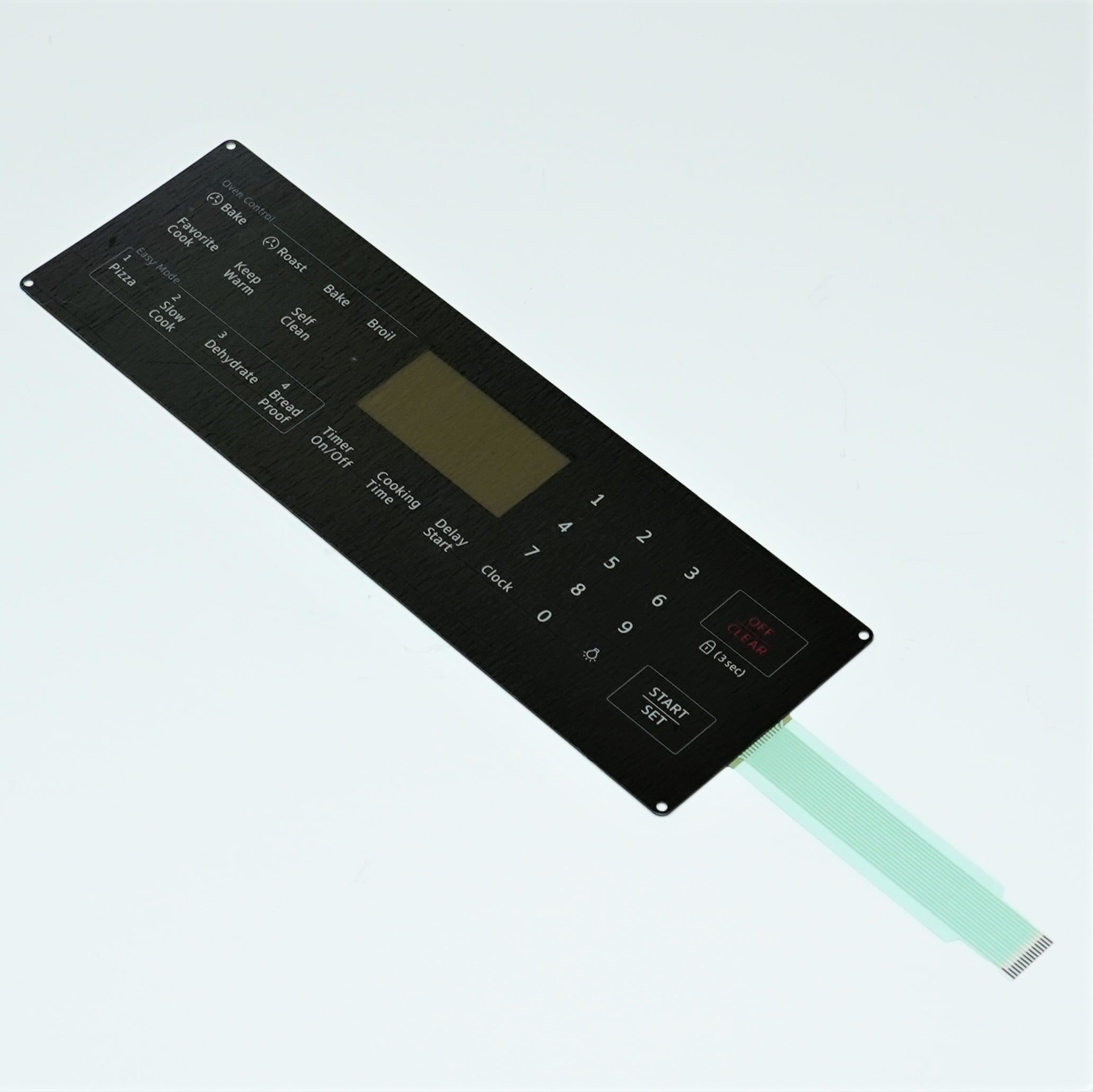Top Features to Look for in a High-Quality Membrane Switch
Top Features to Look for in a High-Quality Membrane Switch
Blog Article
Understanding Membrane Layer Switches: The Key to Dependable and resilient Controls

What Are Membrane Buttons?
Membrane switches are an advanced remedy in the realm of customer interface modern technology, combining functionality and style seamlessly. These devices act as a user interface between customers and digital systems, integrating numerous components into a portable style. Commonly constructed from flexible, thin layers of products, membrane switches are created to react to touch, allowing individuals to connect with equipment and digital devices efficiently.
The primary aspects of a membrane switch consist of a published circuit layer, visuals overlay, and a spacer layer that avoids unintended activation. The visuals overlay can be tailored to show brand name identification or individual choices, improving aesthetics while making sure functionality. Membrane buttons are frequently utilized in different applications, consisting of clinical gadgets, consumer electronics, and industrial equipment, owing to their durability and resistance to environmental factors such as moisture and dirt.
One of the essential benefits of membrane switches is their capability to hold up against wear and tear, making them ideal for high-traffic atmospheres. Furthermore, they are light-weight and call for very little space, enabling for cutting-edge layouts in item development. On the whole, membrane changes represent a practical and efficient option for modern-day electronic interfaces, weding technology with user-centric design concepts.
Just How Membrane Changes Job
The operation of membrane changes joints on an easy yet efficient system that translates customer input right into electronic signals. When an individual presses the switch, the top layer flaws, permitting a conductive component in the circuit layer to make contact with a corresponding conductive pad on the underside of the visuals overlay.
The style of membrane layer switches can vary, however they frequently integrate domes or tactile components to offer comments to the user, improving the total experience - membrane switch. The products used in membrane layer switches, such as polyester or polycarbonate, add to their resilience and resistance to ecological elements, consisting of moisture and dust. The printed circuits are normally enveloped, which safeguards them from wear and tear over time.
Advantages of Membrane Layer Buttons

In addition, membrane layer switches are understood for their sturdiness. Created from robust materials, they are immune to dust, dampness, and physical wear, which significantly extends their life-span compared to standard mechanical buttons. This toughness makes them specifically suitable for high-traffic environments and additional info applications requiring navigate to this site longevity.
One more significant benefit is the convenience of cleansing and upkeep. The smooth surface of membrane layer switches decreases dirt accumulation and is commonly resistant to spills, making them optimal for setups that need frequent sanitization.
Furthermore, membrane buttons supply a structured profile, resulting in a thinner layout that can be integrated right into different devices without including mass. This function not only improves the aesthetic allure yet also adds to a more ergonomic item layout.
Applications of Membrane Layer Switches
Straightforward and flexible, membrane buttons find applications across a variety of industries, consisting of medical tools, consumer electronics, and industrial equipment. In the medical area, these switches are integral to tools such as analysis devices, patient surveillance systems, and mixture pumps, where integrity and ease of cleansing are crucial. Their ability to maintain and hold up against rough environments functionality makes them ideal for such applications.

In consumer electronics, membrane layer switches are used in items like microwaves, cleaning machines, and remotes - membrane switch. Their streamlined style enables instinctive interface, boosting the total individual experience while giving resilience and resistance to wear and tear
Industrial equipment additionally gains from membrane switches, especially in control panels for equipment and automation systems. These buttons use defense versus dirt and moisture, making sure consistent performance in challenging settings. Their adjustable features permit producers to customize them to specific functional needs, enhancing efficiency and performance.
Picking the Right Membrane Layer Switch Over
When choosing a membrane button, it is necessary to think about different variables that influence performance and viability for certain applications. The main considerations consist of ecological problems, tactile responses, longevity, and style requirements.
First, analyze the operating environment; switches exposed to dampness, you can find out more chemicals, or severe temperature levels require particular products to make sure long life and capability. Next off, examine the demand for responsive comments. Relying on user communication, some applications might profit from a tactile feedback to confirm activation, while others may choose a non-tactile layout for visual factors.
Durability is an additional critical element; membrane layer switches ought to be created to withstand constant usage, influences, and abrasion. Make sure the picked button can withstand the expected lifecycle, particularly in high-usage scenarios.

Final Thought
Finally, membrane layer switches function as important elements in the design of long lasting and reputable control systems throughout numerous sectors. Their portable style, integrated with durable building and customizable attributes, improves customer communication while ensuring longevity in demanding settings. The flexibility of membrane layer switches over enables tailored remedies that satisfy certain functional demands, strengthening their value in contemporary technology. As industries remain to develop, the importance of incorporating efficient membrane layer button solutions can not be overemphasized.
Membrane switches over stand for an important element of modern user interface design, blending performance with resilience in various applications.Membrane switches are an advanced solution in the realm of customer interface modern technology, incorporating functionality and layout effortlessly. Generally built from adaptable, slim layers of materials, membrane buttons are designed to react to touch, making it possible for individuals to connect with machinery and digital gadgets efficiently.
The style of membrane switches can differ, yet they usually incorporate domes or tactile components to offer comments to the individual, enhancing the general experience.In final thought, membrane layer changes serve as vital elements in the style of trustworthy and long lasting control systems throughout different markets.
Report this page